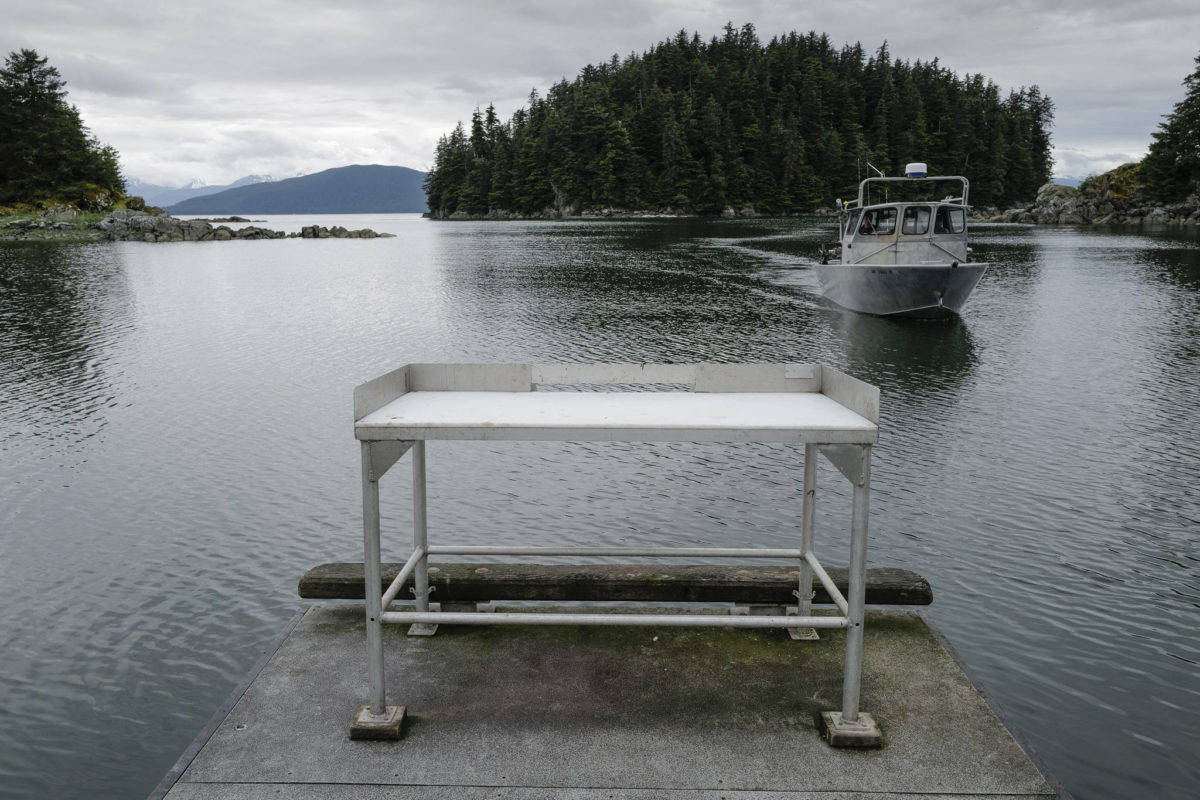Fish cleaning is no longer part of the plan for the proposed float extension at Amalga Harbor.
City and Borough of Juneau Docks & Harbors Board voted Thursday night to approve a 75-foot extension of the existing float at the harbor in an effort to reduce congestion at the harbor, but the motion to OK the project came with some anti-fish cleaning conditions.
Those included that the fish cleaning table at the harbor will be removed, signs discouraging fish cleaning will be put up and prohibiting fish cleaning at the dock will be pursued.
When or how some of those goals might happen will need to be worked out, said CBJ Port Maser Carl Uchytil.
The ultimately successful motion was made by board member Dave McCasland, and it passed by a 6-1 vote. Board member Bob Janes was the lone vote against it.
“I don’t think we’re ready for it,” Janes said of the project before the vote. “I think we have a lot of studies to do.”
[Live: Docks & Harbors Board makes an Amalga Harbor decision]
Initially the float extension was envisioned as a fish cleaning float that would contain multiple fish cleaning tables. However, over the course of multiple months of meetings, Amalga Harbor Road residents and their neighbors sent pages of public comments and provided hours of public testimony against that aspect of the project.
They said fish waste created unpleasant sights and smells and was attracting dangerous, hungry bears.
“I think adding more cleaning stations will add more fish waste,” said Denise Chase. “But what I really wanted to tell you is it was my dog that was killed last year by a food conditioned bear.”
Her voice welled with emotion while speaking.
“That bear was seen fishing at the weir, he was seen eating fish carcasses in the tide flats, and he came over Huffman Harbor,” Chase said. “He attacked my dog in my front yard, I was there. Bears are unpredictable. Why I didn’t get hurt, I don’t know, but my dog died. Please don’t make it any worse.”
[A win-win situation here is tough’: Amalga Harbor project heads to board]
After the meeting, Chase said she was pleased that fish cleaning will not be a significant part of the project, but she is still dissatisfied with the float extension overall.
Up to $280,000 of the project will be paid for using an Alaska Department of Fish and Game grant, Uchytil said. Some in opposition to the project mentioned the grant money may make it tempting to spend on something they viewed as unnecessary.
“I feel they’re trying to solve a problem that doesn’t exist,” Chase said.
The exact cost of the project as it was approved is in flux.
Previously, it was expected to cost $378,000, but Uchytil said that amount included the fish cleaning aspects of the project.
Rick Driscoll, Chase and Kaye Sullivan were also among people who criticized the design of the project.
The proposed 12-foot-by-75-foot float would extend from the existing float at an angle. Chase and others said that will impede the launch used by paddleboarders and kayakers and do nothing to alleviate congestion.
“I don’t think the board as a whole really, truly understands the issue,” said Driscoll, who during the meeting voiced displeasure with the project and the process that led to it.
[They don’t want fish guts or hungry bears in their back yards]
While many of the comments made were against the extension, there were some who spoke in favor of it.
“It has to help,” said Paul Swanson during the meeting.
Previously, people who use the harbor told the Empire the project would likely reduce congestion at the dock.
Uchytil said after the meeting generally speaking more infrastructure is better than less infrastructure for boat launches and retrievals.
He said it may be possible to straighten out the extension if the angled idea proves to make things worse, but it would probably be difficult and costly.
“Once we drive the piles, it’s going to be difficult,” Uchytil said.

